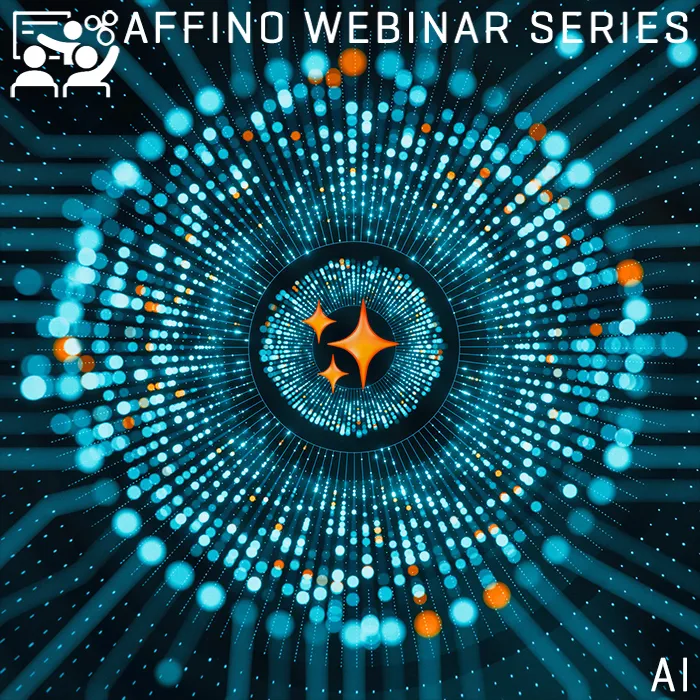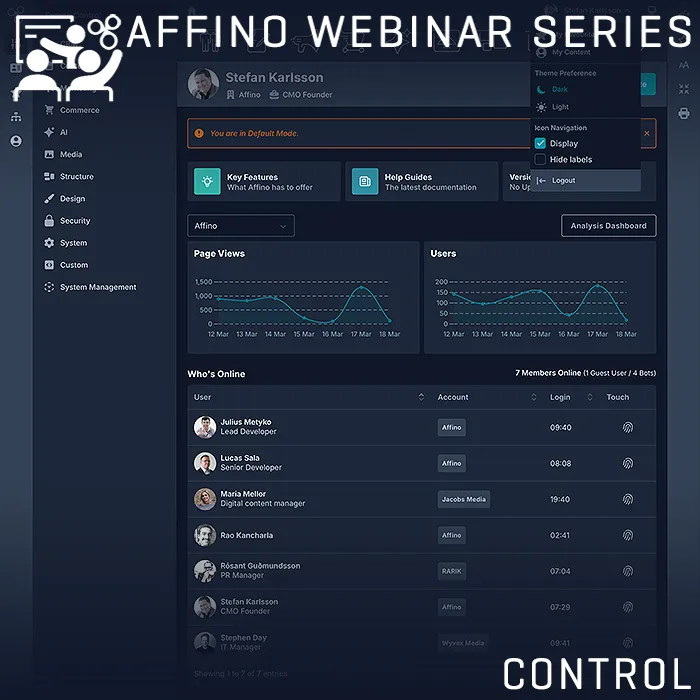The 5 Phases of Brand Engineering

Branding is forever a full-time and a fully 360° vocation. It’s about seeing all the angles and dealing with them in a scientific and progressive manner. As with many task-oriented disciplines, consideration is everything, and every tiny detail can make a difference.
As both a University and Advertising Industry educated Marketing and Brand Specialist, I will always put the teachings of Abraham Maslow above those of Philip Kotler. The essence of Marketing is discerning and being able to influence consumer behaviour - which means you must be able to get into the mindset and motivations of your intended typical customer to be able to cater to and shape their behaviour and buying habits.
I have had considerable success with the following models over the last 20 years or so years, and these are all processes that we regularly apply to Client Brand Origination as well as to the management of our own brands over the longer term.
1 | Articulation
This is the Brand Formation stage - which I call the ’Brand Profile’ - a 12 stage process which considers the origins of everything that you need to create and for whom - from every conceivable angle. There is some degree of overlap and duplication, which is intentional, as it allows you to thoroughly investigate, rationalise and ratify your proofs throughout the process. Key to the process are sensory stimuli - fixed and abstract, real and intangible - visual and related markers which appeal to a specific demographic.
The elements of the Brand Profile are as follows:
- Short Description - The ’Elevator Pitch’
- Purpose - Key Aims and Goals of Brand Impact, what your intentions are for the brand and how versatile it needs to be
- Brand Story / Mythology - The origin story and connective / relatable brand narrative
- Key Proposition - Unique and differentiated offering - what separates you from the competition
- Target Audience - The Typical Median Consumer - an actual person of specific gender, age, education, occupation and other key characteristics
- Mood Mapping - Visual collage mood board - containing absolute target-audience-specific complementary visuals, colours, shapes
- Descriptive Key Words - Shapes, Colours, Mass, Texture, Tone, Style, Opposites, Whatnots (Exclusions)
- Values - Top Tier, Core, Philosophy, Social / Ethical / Environmental (CSR), Competitive - which intangibles and emotions you are seeking to evoke
- Terms - Topics used by Target Audience on Search Engines to get to your product or service
- Brand Relatives - Consumer Environment Active Players - Complementary Brands, Competing Brands, Aesthetic Brand Relatives
- Personifier - Brand Personality Mapping - describing brand as if it were a person - needs to complement ’Target Audience’ above
- Brand Mapping - 4 Axis Competitive Positioning against key criteria
2 | Creation
The Design and Production of the key brand assets, which start with the Brand Identity - Logo, visual identifiers and collateral - and always evolve out of the ’Brand Profile’ (q.v.) - which you can treat as a highly specialised and targeted recipe. Every colour, shape, texture and tone carries latent meaning and needs to be precision-applied - this is the very essence of applied design. Your Brand Profile should tell you what the right mix is to stimulate your intended target audience in the most optimal fashion.
In terms of colour choice, there are so many shades beyond red and blue, but then there are also so many shades of red itself too - all of which convey slightly different things, and have differing quality level associations (pastel vs gem colours). Our Affino colour is a sort of a blue-green - or ’petrol blue’ as its nearest known tonal equivalent. You aim to make yourself unique and differentiated, but not so much as to alienate your intended audience. You must consider how everything you create will be received and interpreted by the target group - I always talk of logos in terms of Unique, Relatable, Meaningful and Memorable.
We put a lot of sway in NLP (Neuro Linguistic Programming) also - so it’s not just the symbolic iconography but the meaning and shape of the words too. The right words can add some significant snap to your message, and can carry strong value-associations which resonate well with the consumer. So for Creation, you must use everything within your toolset to get to the most optimal approach. We are great advocates for the use of the strategic positioning strapline too, particularly for new brands, as this helps define and reinforce values and targeting.
Once you have the logo, this must flow wholly naturally out from the Brand Profile and into every single other creative asset. Whenever you do an advertisement or a promotional giveaway, you must think - does this underline and reflect the values defined in the Brand Profile - is it wholly and utterly relevant to the core mission, and in the right language and medium to generate best effect in motivating the prospects into whatever task you need or want them to action? Every marketing deliverable should have a core call-to-action which can be measured and tracked.
Central to most modern companies is some sort of web presence, which needs content, video and other relevant assets. Some brands still have requirements for printed assets - literature, packaging and various physical elements including uniforms and livery. Others in addition, need guidelines for answering phones or dealing with customer inquiries. All elements that should sit within the same universal framework - framed by the same values and same symbolic visual and linguistic markers.
Most companies will need at least the basics of Logo, Stationery and Website.
3 | Propagation
These are your routes to market - for your collateral - that is to say delivery channels and media / mediums. Nowadays this involves a lot of Social Media, growth hacking, audience building and audience capture.
The key focus here is to identify where you are most likely to encounter your target audience in sufficient concentration and in sufficiently pliable mindset - so that you can slipstream that environment. This could be a magazine, association or event. You may also rely on ’Opinion Leaders’ to spread the message on your behalf.
The days of aggressive database marketing and cold-calling are kind of behind us now, we need to be much more clever about how we approach our intended target audience, and how we get them interested and onboard.
Video is considered a key channel and one of ongoing growing importance, meaning most companies will need to put resources into that medium at some stage. You could be lucky too and find a particular social media influencer active within your domain. Meaning you can use them to endorse your particular point of view and act as a figurehead and advocate.
You hear lots about Viral Marketing too - which comprises a large percentage of social media marketing - corporations using YouTube, Snapchat and Instagram in clever and subtle ways. It’s about how you can approach your target audience in a non-salesy manner, while really trying to capture their attentions and spark them at least into some basic level of discovery / inquiry.
For Affino, we have found that going through relevant professional member organisations is one of the strongest routes in the B2B sector. These organisations should know their membership well, and be able to provide opportunities for you to interface, access and communicate with them - both digitally and face-to-face, often through some sort of formal event.
A member organisation is a great launchpad for a product or service innovation. You can dovetail into totally relevant events which have the right audience profile for your needs - it then becomes a matter of how good your brand assets and collateral are in gaining attention and mindshare. A switched-on company can still with relevant ease ’hijack’ such events with a sharply crafted presence.
Back in the day when we did trade shows, we treated them as if they were FMCG consumer shows - ours was the only stand in glossy piano black with neon visuals and effects, uniforms, literature and collateral to match - achieving a stand-out visual appeal - many people stepped onto the stand to make inquiries simply because they liked the look of our show presence.
4 | Investigation
This is the analysis part of the process. You have to have empirical measures to qualify and quantify the success of your efforts.
Are your brand assets and collateral achieving the intended results? To what degree are they successful, what has gone right, what has gone wrong, and how do you improve? I’ve already mentioned under Creation, that all marketing and brand assets should have quantifiable and measureable calls-to-action. You need to know all these are working as intended.
Marketing is all about establishing and maintaining momentum. These things don’t happen overnight. We talk about Themes and Schemes - where a Theme is the overarching campaign strategy or mission, and which sits on top of every activity, while the Schemes are the individual executions that make up the whole grand campaign.
The idea is to build a metaphorical ’Great Wall of China’ (a monument that has significant presence and can be seen from far and wide) - brick-by-brick - meaning every brick goes into building up and strengthening the same massive wall / edifice. If your schemes don’t properly fit into or underline the main Campaign Theme, you will end up with several detached and disjointed individual walls - which eventually crumble into piles of metaphorical marketing rubble. You must have the discipline to be consistent and single-minded of purpose.
And your analysis and tracking should be able to place the elevation and lateral reach of every brick that goes into the same wall. After a certain period of time, you should be able to gauge just how significant a target you have created, and at what rate its impact is growing.
Some of the metrics will very much be financial, yet many will exist on an s-curve or as a stage of a conversion funnel. There are some generic marketing benchmarks which exist such as email open and click rates, and general conversion rates - so that you can roughly know what to expect. As far as you are concerned, the key metrics should really be cost of each scheme versus measurable outcome. Over a period of time you can trend the uptick or otherwise of inflowing business based on each of your Campaign Schemes.
You should also be aware that as a new brand, it will take a while to get significant traction, and building brand awareness should be a key factor in your early campaigning. Once you have achieved momentum, maintaining it is that much easier.
5 | Recalibration
Following on from Investigation, you must bear in mind that we humans are fickle, and you can’t always hope to get the formula right every time. That which worked before has a wonderful way of losing its currency, and that which never worked, flukily at some bizarre interval suddenly becomes relevant and workable again. What most books on marketing success fail to mention is the serendipitous impact of timing and luck. Being in the right place at the right time, with just the right sort of campaign. Sometimes the margin of error is minute, other times more generous. Yet with most marketing, the timing component is all-important - you need to make hay while the sun shines in other words. If the forecast is for rain, then your angle of attack must be adapted - yet even then, at times forces will align, and a somewhat out-of-place campaign can achieve significant traction almost regardless.
So Marketing, even with its single-mindedness and ’Wall of China’ modelling, must still remain fluid. You do after all still have choice in the direction and elevation of your wall. So in marketing you must be able to fluidly recognise when things aren’t quite working out as expected, and you are compelled to try a different tack.
Never throw the baby out with the bath water though and try not to ditch a campaign when you hit some turbulence. If you keep on starting up new Themes and Schemes without allowing anything to bed in, your marketplace and audience will quickly become confused and fragmented - so yes you must remain fluid, but often it’s the nuance which counts - small and gentle changes or a subtle switch in approach. Most of the best campaigns are benefit-led - talking up the good points. Being negative or alarmist is not often a path to rich rewards, although both strategies can work for insurance for instance - when handled sensitively. We at Affino though have on occasion encountered resistance to public service warning -type campaigns - people really don’t like scaremongering.
A very great part of a mature brand is ’Positive News Flow’ and ’Reputation Management’. There are two interesting stories currently in the news about Samsung exploiting its factory-line workers - leading to the chemical poisoning of as many as 30 relatively young staff. At the same time Apple’s tax affairs have been somewhat called into question - where Apple certainly does not appear to be contributing to social tax revenues in a fair and equitable manner. There are in fact 3 ’exploitations’ modern corporations are often guilty of:
- Exploitation of workers - dangerous and unfair working practices, underhandedly low levels of remuneration and rewards
- Exploitation of consumers - aka profiteering - making 70-90% profits on goods or services - aka taking the customer to the cleaners!
- Exploitation of social responsibility - tax avoidance and sociological and environmental abuses
Really no company should be involved in any of the above, but such are the structural complexities and diverse global activities of these corporations, that they frequently find themselves once removed from the exact extent of their global operations - and at odds with public opinion. Here then ’Topical Slipstreaming’ and ’Social Governance’ are critical. Even though you may not call it such, all companies are involved in some sort of public relations. How they communicate with the outside world - how openly and transparently, how altruistically and how genuinely.
We are at the dawn of an increasingly open age - where it is thankfully getting more and more difficult to sweep the ugly truth under the carpet. Companies are forced to account for more and more of their actions, and be answerable to their impact - real and perceived.
I don’t like to talk too much about spin-doctoring, because much of Marketing can be mired in spin. In my past advertising career, a significant amount of time was spent on essentially making up reasons for why a consumer might want a particular product.
Great marketing though is about distilling the essential truth of your offering into its most concentrated form and making it easy for potential customers to discover you and understand exactly what you are all about and why you are relevant to their specific situation ...
Related
How can sensory stimuli enhance brand profile development?What strategies optimize the creation of brand identity assets?Which channels effectively propagate brand messages to target audiences?What metrics best measure the success of brand campaigns?How can brands adapt to changing consumer behaviors and preferences?
Did you find this content useful?
Thank you for your input
Thank you for your feedback
Upcoming and Former Events
Webinar - Introducing Affino's Fourth Generation AI Services
Webinar - Enhanced Affino Commerce & Subscription Capabilities
Webinar - All About the New Affino Control Centre
Affino Innovation Briefing 2024
Meetings:
Google Meet and Zoom
Venue:
Soho House, Soho Works +
Registered Office:
55 Bathurst Mews
London, UK
W2 2SB
© Affino 2025




































